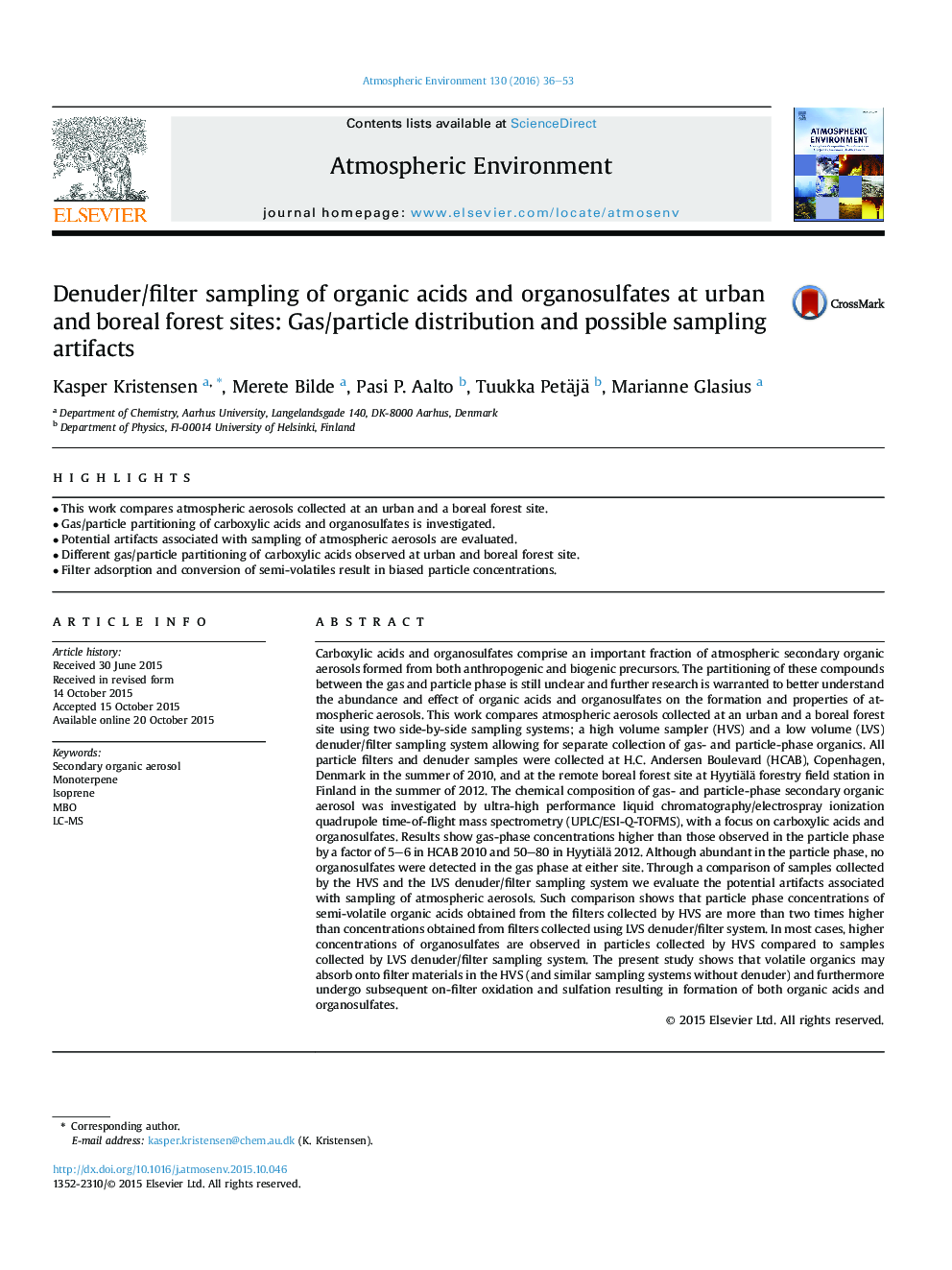| کد مقاله | کد نشریه | سال انتشار | مقاله انگلیسی | نسخه تمام متن |
|---|---|---|---|---|
| 6336609 | 1620344 | 2016 | 18 صفحه PDF | دانلود رایگان |

- This work compares atmospheric aerosols collected at an urban and a boreal forest site.
- Gas/particle partitioning of carboxylic acids and organosulfates is investigated.
- Potential artifacts associated with sampling of atmospheric aerosols are evaluated.
- Different gas/particle partitioning of carboxylic acids observed at urban and boreal forest site.
- Filter adsorption and conversion of semi-volatiles result in biased particle concentrations.
Carboxylic acids and organosulfates comprise an important fraction of atmospheric secondary organic aerosols formed from both anthropogenic and biogenic precursors. The partitioning of these compounds between the gas and particle phase is still unclear and further research is warranted to better understand the abundance and effect of organic acids and organosulfates on the formation and properties of atmospheric aerosols. This work compares atmospheric aerosols collected at an urban and a boreal forest site using two side-by-side sampling systems; a high volume sampler (HVS) and a low volume (LVS) denuder/filter sampling system allowing for separate collection of gas- and particle-phase organics. All particle filters and denuder samples were collected at H.C. Andersen Boulevard (HCAB), Copenhagen, Denmark in the summer of 2010, and at the remote boreal forest site at Hyytiälä forestry field station in Finland in the summer of 2012. The chemical composition of gas- and particle-phase secondary organic aerosol was investigated by ultra-high performance liquid chromatography/electrospray ionization quadrupole time-of-flight mass spectrometry (UPLC/ESI-Q-TOFMS), with a focus on carboxylic acids and organosulfates. Results show gas-phase concentrations higher than those observed in the particle phase by a factor of 5-6 in HCAB 2010 and 50-80 in Hyytiälä 2012. Although abundant in the particle phase, no organosulfates were detected in the gas phase at either site. Through a comparison of samples collected by the HVS and the LVS denuder/filter sampling system we evaluate the potential artifacts associated with sampling of atmospheric aerosols. Such comparison shows that particle phase concentrations of semi-volatile organic acids obtained from the filters collected by HVS are more than two times higher than concentrations obtained from filters collected using LVS denuder/filter system. In most cases, higher concentrations of organosulfates are observed in particles collected by HVS compared to samples collected by LVS denuder/filter sampling system. The present study shows that volatile organics may absorb onto filter materials in the HVS (and similar sampling systems without denuder) and furthermore undergo subsequent on-filter oxidation and sulfation resulting in formation of both organic acids and organosulfates.
Journal: Atmospheric Environment - Volume 130, April 2016, Pages 36-53